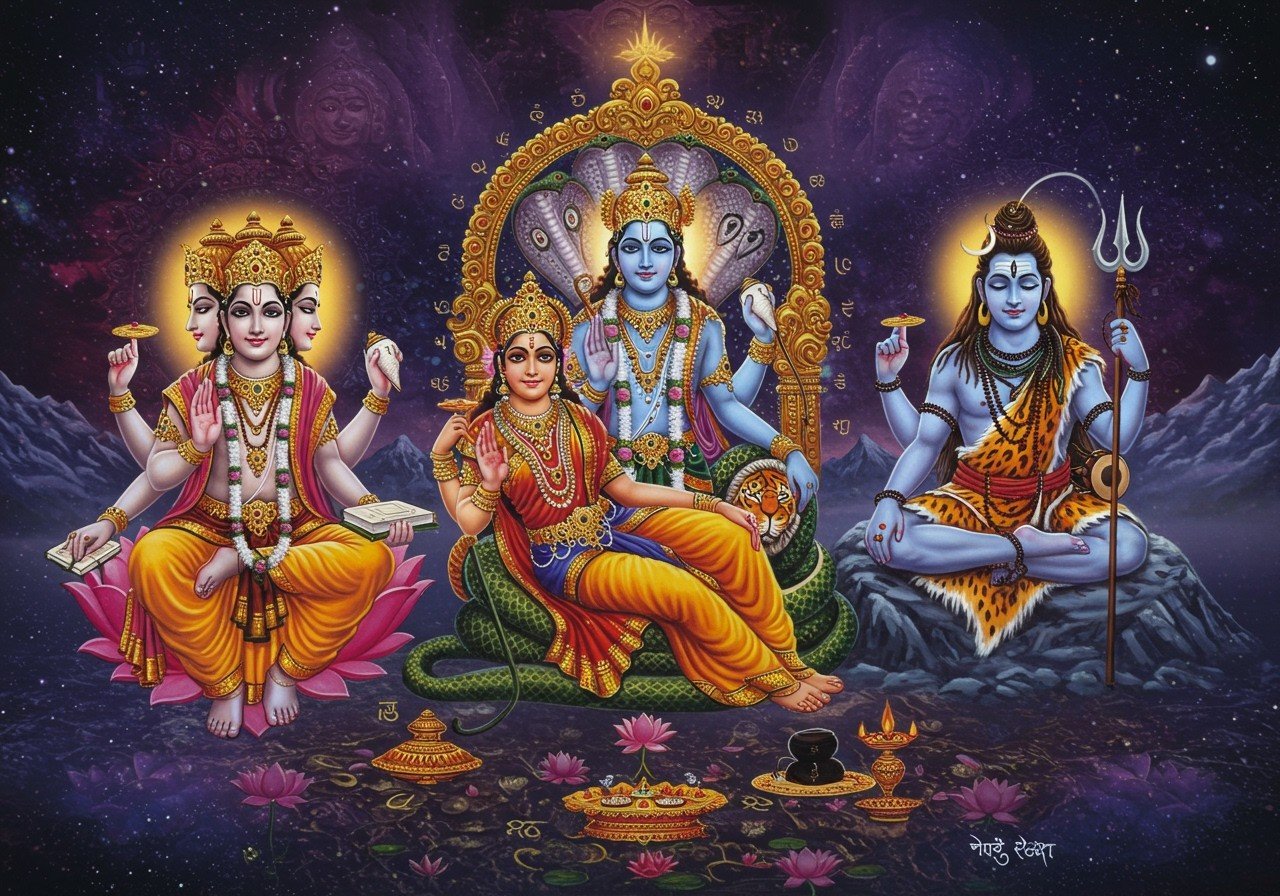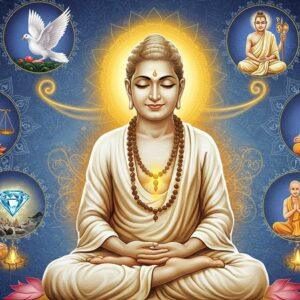
The Hindu Trinity, also known as Trimurti, is a core concept in Hinduism. It represents the universe’s cyclical nature through three fundamental forces: creation, preservation, and destruction—personified by Brahma, Vishnu, and Shiva, respectively. These deities are not separate entities but rather different aspects of the one Supreme Being, reflecting the interconnectedness of all existence.
Understanding the Trinity through Scriptures
The concept of the Trinity has evolved over time, with its understanding nuanced across different Hindu scriptures:
-
Vedas: The Vedas, the oldest Hindu scriptures, lay the foundation for the concept of a single Supreme God. While not explicitly mentioning the Trinity, they allude to the idea of one divine power manifesting in various forms. The Rig Veda, for example, speaks of a single Supreme Being with different names.
-
Upanishads: The Upanishads delve deeper into the philosophical understanding of the Supreme Divine. They emphasize the concept of one transcendental being, Brahman. The Maitri Upanishad introduces the concept of Trimurti, but it’s presented as three forms of the same supreme being rather than three distinct gods.
-
Puranas: The Puranas elaborate on the roles and stories of Brahma, Vishnu, and Shiva. The Vishnu Purana (1.2.66), for instance, describes them together, highlighting their respective functions in the cosmic cycle. The Kurma Purana emphasizes the unity of the three gods.
-
Later Scriptures: Later scriptures reinforce the philosophical understanding of the Upanishads. They emphasize the single Supreme Divine, with the multiple gods understood as manifestations of this one transcendental being. This brought the ancient philosophical understanding back to the forefront.
Brahma: The Creator
Brahma is depicted with four heads, symbolizing his role in creating the four Vedas and the four directions. He is often shown with a beard and holding a water pot, representing the primordial waters from which creation emerged.
Vishnu: The Preserver
Vishnu, the preserver, is often depicted with four arms, holding a conch, a discus, a mace, and a lotus flower. These symbols represent different aspects of his power and divine attributes. You can explore a range of Vishnu murtis and related items at poojn.in.
Shiva: The Destroyer
Shiva, the destroyer, represents transformation and the cycle of creation and destruction. He is typically depicted with a third eye, symbolizing wisdom and insight. Interested in learning more about Lord Shiva? Visit poojn.in for a selection of Shiva murtis.
The Significance of the Trinity
The Hindu Trinity is more than just a collection of three gods. It’s a profound philosophical concept that represents the cyclical nature of reality. This cycle of creation, preservation, and destruction is not seen as linear but rather as a continuous process of renewal and transformation.
For devotees, understanding the Trinity provides a framework for understanding the universe and their place within it. It encourages reflection on the interconnectedness of all things and the importance of balance in life.
Want to enhance your spiritual practice? Poojn.in offers a wide variety of spiritual products, including camphor, sacred texts, and more. Explore our collection today!

